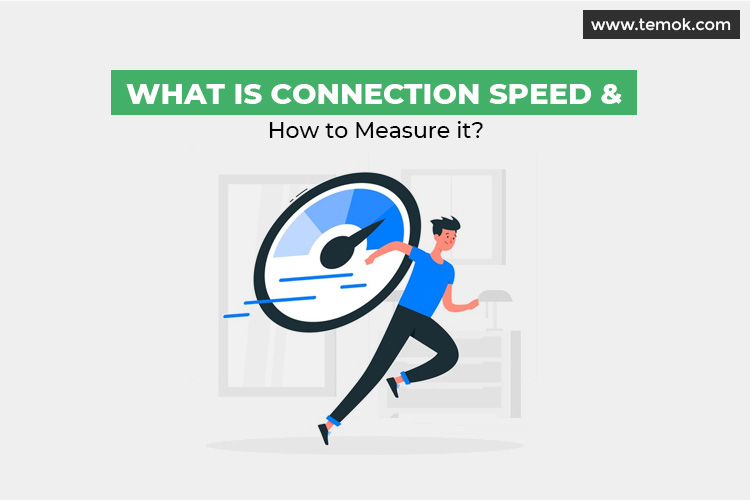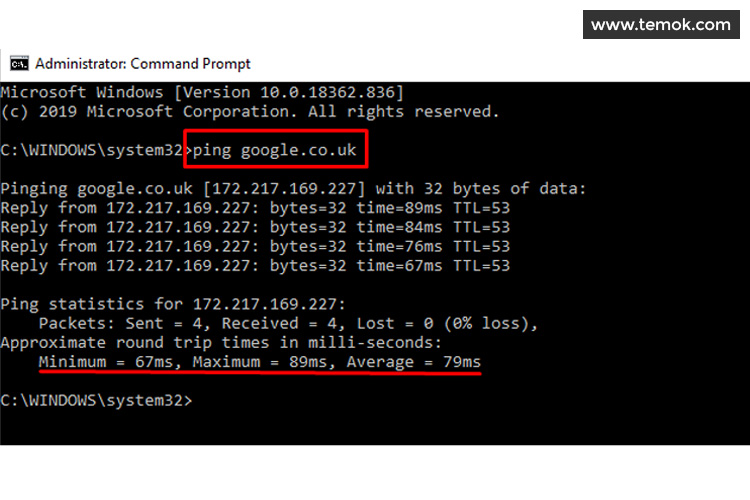Internet latency is the secret enemy of internet (broadband) users and slows down superfast internet connections. If you are a broadband user and looking at the listed download speed that service providers are proudly advertising is half and the other half is latency. In this article, you will learn about connection speed and how it is measured, what is internet latency, and its main causes with useful ways to reduce it.
Table of Contents
What is Internet Connection Speed and How to Measure it?
It is the speed of data transferring between your devices and the internet – it is also known as bandwidth.
There are two types of Internet connection speeds:
- Download Speed: Receiving speed is known as the rate at which information travels from the internet to your browsing device. Receiving emails downloading any video or programs, and visiting any webpage would be examples of downloading.
- Upload Speed: Send speed is known as the rate of information that travels from your browsing device to the internet. Sending emails and uploading any documents or pictures would be examples of uploading.
The connection speed depends on several factors such as the type of connection either fiber or copper cables, line quality, and the distance from the cabinet.
The internet speed is measured in megabits per second (Mbps) and shortened to Mb like 10Mb or 20Mb. Moreover, a bit is the smallest unit of data and you can also see kilobits per second (Kbps) or Kb.
1 Kbps = 1,000 Bits per second
1 Mbps = 1,000,000 Bits per second

The higher the number of megabits per second (Mbps) you have, the faster internet speed should be:
- The maximum rate at which data can be received using an internet connection is known as the downstream bandwidth and the maximum rate at which information or data can be sent is known as the upstream bandwidth.
- Most people need to download or view webpages instead of uploading, so the downstream bandwidth is higher than the upstream bandwidth and it is measured when you are connected with the Internet.
If your connection download speed is 80Mbps and an upload speed of 20Mbps. Using this speed, you can download 500Mb of photos or media within 10 seconds. and upload the 70MB files on the internet within 3 seconds. If the host server is based on a dedicated server having great bandwidth then it will also help to reduce the latency time.
What is Internet Latency?
In simple words, Latency = Delay. It is the amount of delay time it takes to send any information from one point to another. If you consider the internet latency then it is the user action and response from the requested website or round trip time from the web browser to the server.
The ideal internet latency level is 0 but the effects of distance and delays caused by internet infrastructure equipment. It means latency can never be removed completely instead of minimized. Latency directly affects SEO and decreases the website performance, so there are maximum chances for a user to leave the website or application.
How To Check Your Internet Latency?
If you are a Windows user then open the command prompt by searching “cmd” in your start bar. A black screen will be opened then write “ping” and type the IP address or URL of any website on the internet and press enter. Your computer measures the minimum, maximum, and average time it takes to send and receive a piece of data to that particular web address in milliseconds (ms). I am checking the Google.co.uk latency time as you can see in the picture

If you are looking at the answer for what is a good latency speed for the internet then an average speed faster than 50ms is considered as ideal speed for most purposes and slower than 100ms will cause problems. What is a good latency number or what is acceptable latency for the internet? Remember, between 50 and 100ms is a good internet latency rate that is perfect. It is also important to look at the minimum and maximum speeds as well. If you experience a big difference between the minimum and maximum speed then your connection is unstable and data can be lost completely as you try to send or receive it. To confirm the stability of the internet connection, you need to run the test several times.
This process was for Windows users, so if you are using any other operating system then there are many websites available to measure your internet latency rate: You can visit Pingtest or Meter for this purpose.
What are the Main Causes of Internet Latency?
The following are the major causes that have a direct impact on your internet latency:
- Transmission Mediums: Every transmission medium like WAN or Fiber Optic cables has different speeds and limitations that can affect internet latency due to resistance and other factors.
- Propagation: It is the amount of time that a data packet takes to travel from one point to another.
- Routers: Every data packet has header information that contains the address and other information that is needed to reach its intended destination. So, routers take time to analyze the headers and each network hop takes time that increases the internet latency rate.
- Storage Delays: Every network is based on bridges, switches, and other intermediate devices, so when a packet is stored or accessed it takes time.
How To Reduce Internet Latency?
If you implement these techniques listed below then internet latency can be reduced. When you will reduce the server latency it will help you to load web resources faster.
1. HTTP/2
Use HTTP/2 to minimize internet speed latency. It will help you to reduce server latency by minimizing the number of round trips from the sender to the receiver using parallelized transfers.
2. Fewer External HTTP Requests
When you reduce the number of HTTP requests it is not only applied to images but also to external resources like CSS or JavaScript files. In some special cases, when you are referencing information from any other server, you are making an external HTTP request that will increase the website latency rate based on the speed and quality of your referencing server.
3. Using a CDN
Using a CDN the resources will be closer to the end-user by caching them in multiple locations based on their geographical locations all over the world. Once all resources are cached then the user requests only need to communicate with the nearest point of presence to retrieve requested data instead of accessing the origin server each time.
4. Using Pre-fetching Methods
Pre-fetching web resources don’t necessarily reduce the internet latency rate but it improves the website’s perceived performance. If you have implemented pre-fetching then intensive latency processes take place in the background when users browse any particular page. So, when they click on a subsequent page, and the DNS lookups have already been taken it will load the page faster.
5. Browser Caching
It is another useful technique to reduce internet latency because browsers cache particular resources of any website locally to improve latency rate and also decrease the users’ requests back to the server.
Conclusion
Latency is an unavoidable part of networking ecosystems, so we can minimize it instead of eliminating it. However, the techniques mentioned in this article are important to reduce the website’s latency and help you improve page load speed for end-users.

Shivai
This is nice.
jack
nice